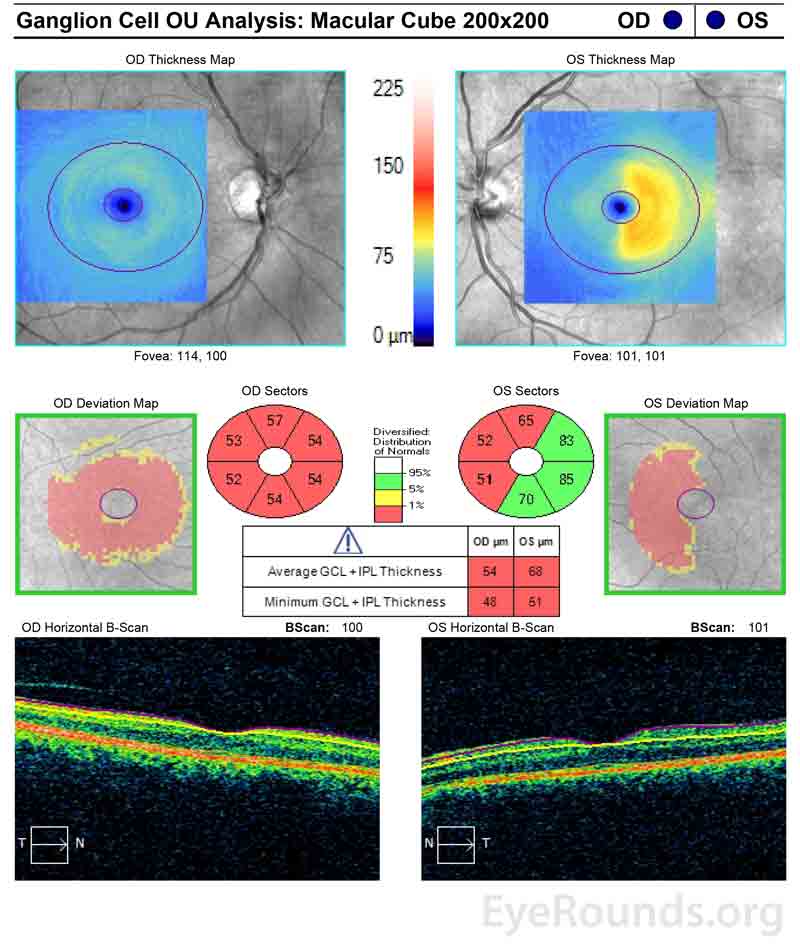
The patient was a 57-year-old man with vision loss in the right eye (OD) greater than left eye (OS) in the setting of a craniopharyngioma, which was resected 16 years prior. His visual acuity had been no light perception OD and 20/20 OS since the procedure.


Contrast-enhanced magnetic resonance imaging (MRI) of the brain and orbits showed a stable tiny ring-enhancing cystic lesion anterior to the pituitary infundibulum and atrophy of the right greater than left optic nerves.
The presence of bow-tie, or band, atrophy suggests that there is a compressive optic neuropathy from an anterior chiasmal and/or medial, posterior optic nerve lesion. This clinical sign warrants further evaluation with magnetic resonance imaging (MRI) or computed tomography (CT) in a patient with unexplained vision loss. Unilateral band atrophy can also be seen in a patient with a unilateral optic tract lesion.